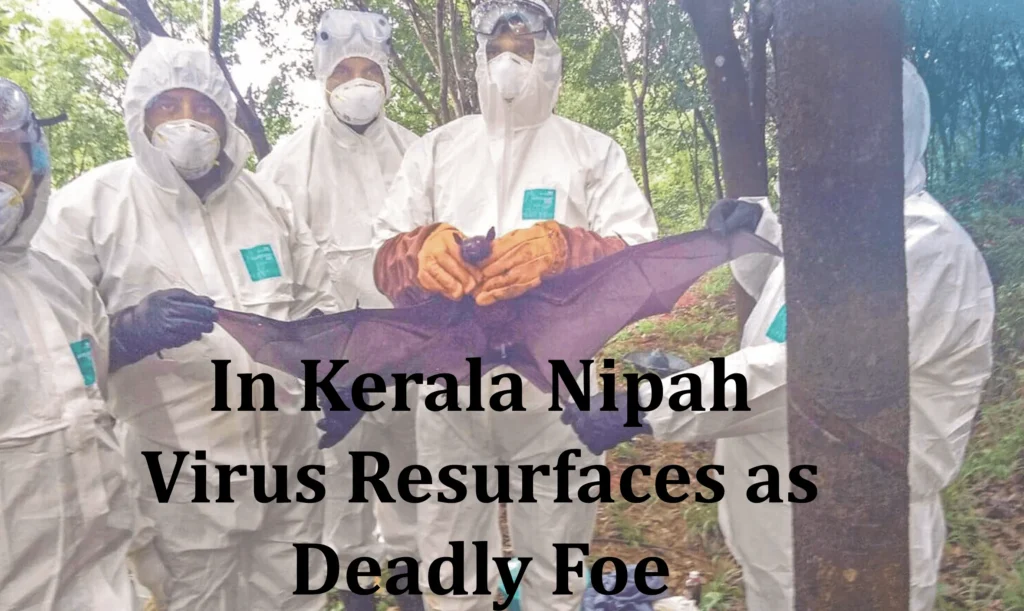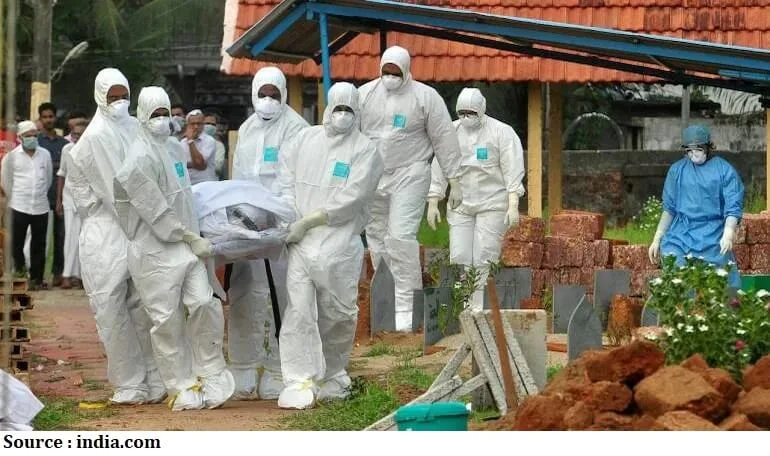
In a grim turn of events, the tranquil state of Kerala, India, has once again found itself grappling with the deadly Nipah virus. With two recent fatalities attributed to this rare virus, the state is on high alert, racing against time to contain its spread. The state is also concerned as the state has recently observed huge gathering on the occasion of Onam. Through this blog post we’ll have a closer look at the outbreak of Nipah virus in Kerala. Let’s break down what the Nipah virus is in simpler terms first and then learn about the current situation on Kerala.
What is Nipah Virus?
The Nipah virus is a sickness that can pass from animals to people. This usually happens when we’re close to infected animals or eat food that’s not clean. Body fluid of an infected person can be an easy carrier of this virus.
What Happens When You Get It?
When someone gets the Nipah virus, it can show up in different ways. Some people might not feel anything, while others can get really sick with breathing problems or a dangerous swelling in their brain. For farmers, Nipah can be really bad, especially for pigs. It makes them sick, and that’s a big issue because it can hurt the farmers’ work and income. So, to put it simply, Nipah is a sickness that can go from animals to people, and it makes both animals and people very unwell.
Also Read: Nipah Virus: Causes, Symptoms, and How to Stay Safe
The Grim Tale of Kerala Nipah Virus
Kerala’s tryst with Nipah began in 2018 when a 26-year-old man, initially diagnosed with a fever and cough, unknowingly brought the virus into a hospital. This single case rapidly burgeoned into an outbreak, claiming the lives of twenty-one of the twenty-three individuals it infected. Surprisingly, this year’s epidemic is the state’s fourth since that dismal year.

Yet again Kerala Battles Nipah Virus
The latest chapter in Kerala’s battle against Nipah unfolded with two recent deaths. One occurring this month and the other on August 30th. These fatalities have shocked the state, leading to widespread testing and quarantine procedures in the impacted area. Since the victims were linked, there are now worries that the two family members may have caught the illness. National Institute of Virology is examining their sample which was sent by the State Government.
Awaiting Confirmation of Nipah Virus
While the state government eagerly awaits official confirmation of the virus’s presence from the National Institute of Virology in Pune, the situation remains tense. Samples from the deceased and their relatives have been dispatched for testing, but results are pending. Kerala’s health minister, Veena George, conveyed that the samples from Kozhikode were still in the processing phase.
Government’s Reaction
The government’s reaction has been prompt and unwavering. Pinarayi Vijayan, the chief minister of Kerala, addressed the issue in a video message. He reassured the public that individuals who had been in close touch with the deceased were receiving care. He urged the state’s residents to assist the authorities in containing the virus’s spread. Further, he emphasized to follow the action plan set forth by the health department.
Conclusion
Kerala’s ongoing struggle with the Nipah virus illustrates the persisting dangers presented by infectious illnesses in the contemporary world. The significance of vigilance, collaboration and readiness in the face of such lethal opponents cannot be stressed. The state waits for confirmation and ramps up its attempts to limit the spread of the Virus. With the return of Nipah Virus in Kerala the need for further study on the virus if felt to a great extent. Furthermore, the development of drugs and vaccines in order to ultimately overcome this virus is the need of the hour.
